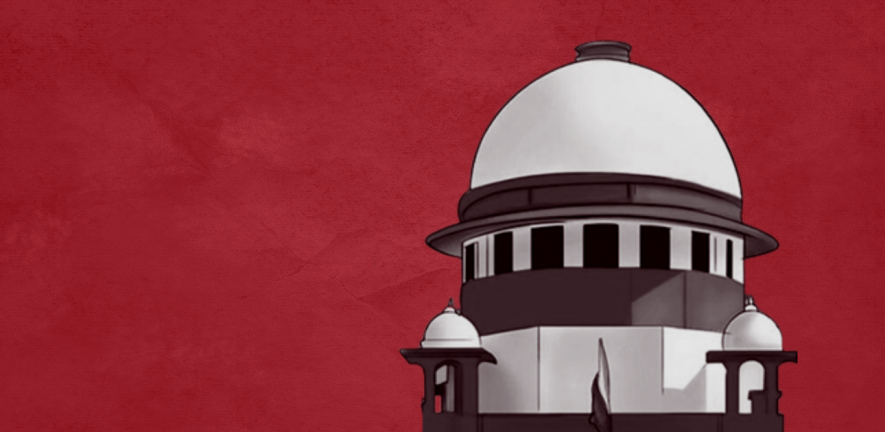Demonetisation: Govt, RBI to Give All Relevant Records in Sealed Cover to SC

Arguments in the challenges to the 2016 demonetisation concluded today, with the Constitution bench reserving its judgment in the case.
—-
Sealed cover jurisprudence resurrected itself today before the Supreme Court with the respondents in the demonetisation case agreeing to submit all the relevant records in a sealed cover for the scrutiny of the five-judge Constitution bench, which reserved its judgment today.
In a hearing of another case earlier, the Court had discouraged the resort to sealed cover jurisprudence by the Union Government, because it effectively prevented the other side from responding to the contents of the sealed cover, thus nullifying the concept of fair hearing.
The Supreme Court bench of Justices S. Abdul Nazeer, B.R. Gavai, A.S. Bopanna, V. Ramasubramanian and B.V. Nagarathna tacitly accepted the Attorney General for India, R.Venkataramani’s offer to produce the relevant documents in a sealed cover, when it directed the Union Government and the Reserve Bank of India to produce them for its perusal.
Senior advocate Shyam Divan, representing a Non-Resident Indian (‘NRI’) who could not exchange the demonetised currency within the stipulated deadline, explained two aspects of Section 26 of the Reserve Bank of India Act, 1934, that is, interpretation and its working.
On the interpretation of section 26, he said that the recommendation by the Central Board is a necessary condition precedent to exercise the powers under Section 26(2) of the RBI Act. Under section 26(2), the Union Government, by notification in the Gazette of India, can declare any series of bank notes of any denomination to cease to be legal tender on the recommendation of the Central Board, he told the bench.
He then answered in the affirmative to the question of whether the Union Government can proceed contrary to the recommendations. The power of the RBI is only to recommend, he said.
On the working of section 26, he stated that it is a self-contained provision and does not require any external administration.
At this juncture, Justice Gavai intervened and said that this was contrary to the submissions of Chidambaram who had argued that the entire scheme of the RBI Act had to be taken into consideration.
Divan clarified that the working of section 26 is self-contained because it’s an administrative action alone that decides the recommendation part. It does not require any legislative aid, he submitted.
Divan then told the court that section 26(1) contains two distinct concepts: first, it ‘shall be a legal tender’ and second ‘guaranteed by the Central Government’. Characterising it as legal tender would mean that it carries some value whereas, the guarantee part is a sovereign assurance, he suggested.
Speaking on the second aspect of section 26(1), he submitted that the guarantee by the Central Government was alive even after November 8, 2016. It was alive till December 30. He then submitted that had there been no statute (referring to Specified Bank Notes (Cessation of Liabilities) Act, 2017), the guarantee would have continued.
Divan suggested that the guarantee would survive even if a denomination ceases to be a legal tender because it does not get extinguished by an executive notification.
Justice Nazeer intervened and told Divan that the promisor is the RBI whereas, the guarantor is the Central Government. Once the primary liability ceases, the guarantee would cease too because the liability of the guarantor is co-extensive with that of the promisor.
Justice Gavai told Divan that sub-sections (1) and (2) of section 26 have to be read together. If the denomination ceases to be a legal tender, the guarantee will not survive, Justice Gavai said.
Divan maintained, however, that the guarantee survives and there is no automatic extinguishment of it once the denomination ceases to be a legal tender by Executive action. He suggested that section 26(1) is to be exercised by legislative authority and notification cannot override it. To this, Justice Nagarathna responded by saying that the 2017 Act was enacted for this purpose, and therefore, this argument did not hold good.
Justice Nazeer also pointed out that demonetisation is followed by remonetisation and which allows the exchange of denominations and it is not that the guarantee continues.
Divan also submitted that the court should not have blocked the jurisdictions of other high courts under Article 226.
He suggested that the remedy is now only limited to those who can contact a lawyer, who is willing to do pro bono and that too in the Supreme Court. He requested the court to pass a general order and not restrict it to those who have appeared through the petitions, to accommodate all genuine classes of persons who have not been able to approach the Supreme Court.
Senior advocate Jaideep Gupta, appearing on behalf of the RBI, expressed his concern against the claims of the petitioners that there is a huge number of people who have grievances against the cut-off date of depositing the old notes and exchanging them with the newer ones.
Gupta was speaking about the notification that had provided a limited window of opportunity for people to exchange the denomination till December 30, 2016. He submitted that the Union Government did not want to extend the date of exchange.
Justice Nagarathna asked him about those genuine cases where the citizens were not able to exchange the denomination within the stipulated time. He replied that it’s difficult to accommodate every such situation.
Further, Gupta said that a remedy of mandamus does not lie here to give the opportunity to a large class of people to exchange notes. Referring to the Specified Bank Notes (Cessation of Liabilities) Act, 2017, Gupta noted that citizens could not be encouraged to hold the notes that ceased to be legal tender under the hope that the Supreme Court will vary the law.
The bench, at this juncture, sought a clarification on the mechanism of deposits that were made between November 10 to December 30, 2016. Gupta told the bench that any amount could be deposited to a KYC (Known Your Customer) compliant bank account. The limit was only on the withdrawal of the amount, which was Rs.4000 in the first instance. The rest were credited to the account and could be taken out as per the guidelines in place, he replied.
To this, Justice Gavai with a touch of humour remarked: “Unlimited deposit, subject to an invitation from the Income Tax department”. Gupta told the bench that there have been investigations on the basis of this. It is because people could only deposit that amount which they had held legitimately.
Further, on the contention of the petitioners to eliminate the proviso of the December 30 notification concerning those NRIs who went abroad and left money in India in excess of Rs.25000, he replied that no provision of statutory interpretation allows them to do that. Under the said notification, NRIs were given a grace period to avail the facility from January 2 to June 30, 2017.
This cannot certainly be done in the name of equity, Gupta submitted.
Gursimran Kaur Bakshi is a staff writer at The Leaflet.
Kshipra Shukla is a second year student pursuing her B.A. LLB. (Hons) from NALSAR University of Law, Hyderabad.
Get the latest reports & analysis with people's perspective on Protests, movements & deep analytical videos, discussions of the current affairs in your Telegram app. Subscribe to NewsClick's Telegram channel & get Real-Time updates on stories, as they get published on our website.
























